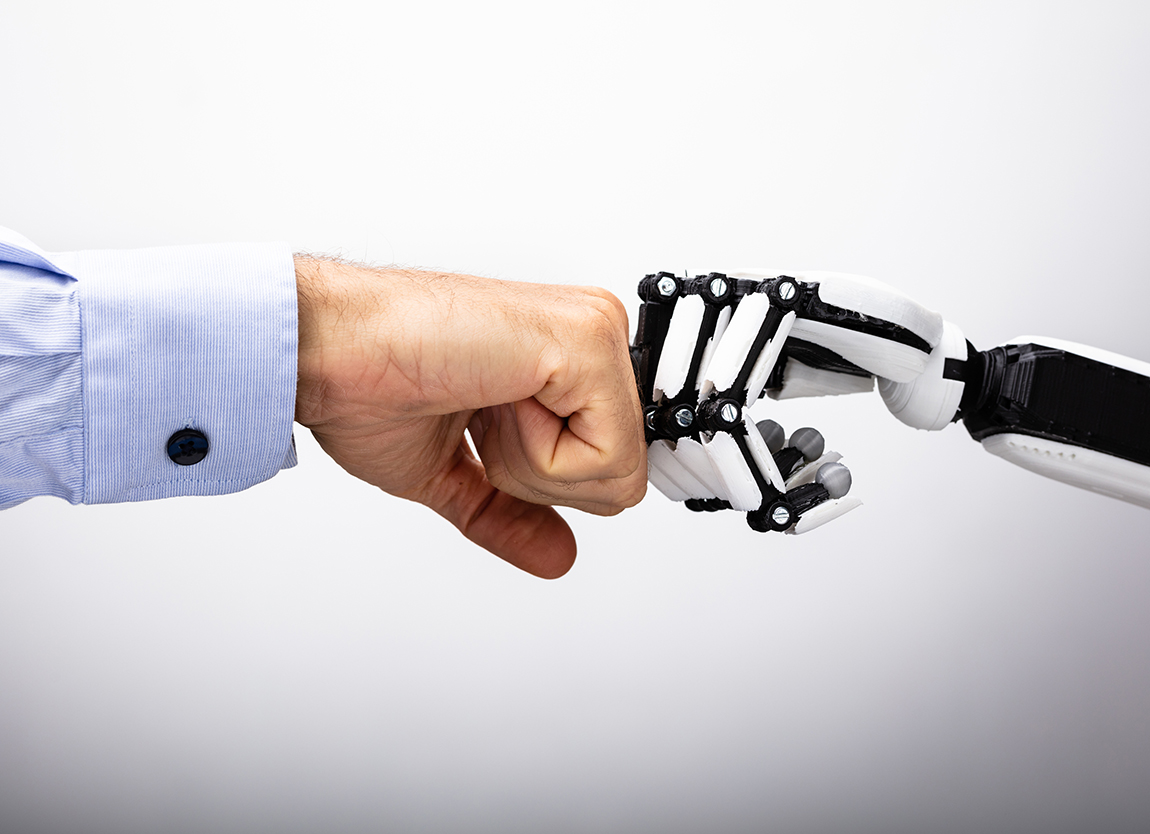AI, machine learning, and data analytics are about to profoundly change how we hire and manage talent. Are you ready?
By Marc Effron
The growing momentum of artificial intelligence (AI), machine learning, and data analytics offers HR the opportunity to make smarter, faster people decisions. AI can flag and eliminate potentially biased selection choices. It can identify individualized secrets to high performance to help every employee deliver superior results.
It’s an exciting opportunity that brings with it serious new questions about how to operationalize these choices in a data- and AI-enabled world. Will we use these AI-generated insights to empower or disempower managers? Will system outputs be considered suggestions or directives? Who will decide?
For ease of reference, let’s call the combination of AI, machine learning, and data analytics The System, since we know these capabilities will exist but not necessarily how each will be deployed.
We believe that HR’s and managers’ initial joy with The System will degrade into caution and potentially outright rejection of its arguably correct findings when they find out its logic doesn’t match their personal preferences.
Why HR Will Love The System (At First)
The System will offer HR value-adding guidance and creative insights that are only possible through massive data analysis. That guidance and insight will be customized, precise, and delivered in the form and at the time it’s needed most. The benefits to HR can include the following:
Benefit #1: It can identify employee risk earlier
The System will be able to scan employees’ social media and combine that information with workplace data including personality tests, 360 feedback, text-analyzed performance reviews, company-supplied fitness or sleep tracker data, and more to identify at-risk employees.
It can tell Shruti she’s at high risk for derailment given her Dark Side profile, current workload, sleep, and exercise patterns. The System would text Shruti suggestions for how to better manage her life and work situations to reduce that risk. The System would also send her a note that shows upcoming meetings where those derailing behaviors may emerge, as well as specific strategies to prevent that from happening.
The System can identify Bob as a potential danger in the workplace given his low performance, reactionary personality traits, and groups that he associates with online. The System will schedule a meeting between HR, Security, and Bob’s manager to review the risk and decide on appropriate steps.
Benefit #2: It will enable fact-based, fair investigations
Investigating claims of bad workplace behavior often involves balancing competing opinions and weighing insufficient facts. In The System–enabled workplace, HR will know from employees’ badge data who’s been where on campus, so it can quickly determine if someone was in a location where a workplace theft occurred.
Voice analysis technology, meanwhile, will tell HR how truthful someone is being in a conversation, which will make it easier to decide which competing opinion about a dispute is correct.
Benefit #3: It will reduce legal risk
You need to terminate Carter, but you aren’t sure if your standard severance package and contract language are sufficient. The System will tell you his likely value to your competitors, any history of filing workplace litigation, his following on social media, and the tone of his posts to determine the right compensation amount and structure and the best severance agreement language.
Benefit #4: It will reject fads and fake science
The System will understand the science of industrial/organizational psychology. If an HR leader tries to order a strength-based tool, it will intercept the request and inform the leader about the fundamental flaws in focusing on strengths. If someone tries to order a Myers-Briggs assessment, it will reject the request, walk the leader through a diagnostic about what he’s trying to accomplish, and provide superior options.
Benefit #5: It can construct the perfect team for any given scenario
The System will use data about a project’s specific characteristics to identify the optimal mix of skills, behaviors, and mindsets needed for a successful outcome. It will create a list of internal candidates who match those needs and rate their likely contribution and development outcomes from serving on the project team. Those candidates will know they’ve been identified and the reasons for their eventual selection or rejection from the final team.
Now, Here’s Where HR Gets Nervous
These advanced insights will help HR make smarter choices and reduce managers’ frustration by automating or eliminating routine HR processes. But HR’s and managers’ initial joy about The System’s benefits may quickly be tempered when they face the less pleasant drawbacks of working within a highly logical system.
The System will know the right thing to say and when to say it. It will be prescriptive with managers about this. It will also force leaders to make tough decisions they’ve delayed for years and it will raise uncomfortable questions for HR.
Drawback #1: It will coach managers on what to say and when to say it
The System will send Zhao a message Sunday at 7 p.m., since it knows that’s when he reviews his to-do list for the upcoming week. The message will remind him to congratulate Rajan on the success of the new marketing strategy and it will include the specific sales increase his strategy drove in Caribbean Corn Crunchers last quarter.
It will tell Zhao that Rajan will likely be in Shared Kitchen B at 8:25 a.m., based on his employee badge data history, and suggests that Zhao stop by at that time for an informal conversation.
Drawback #2: It will tell a manager which candidate to hire or not hire
The science is clear: Interviews are one of the least accurate and most bias-ridden ways to select a candidate. But they’re also immensely popular in a highly objective way. Since the conclusive science tells us that intelligence and select personality factors are the best predictors of success at work, The System will use this data to predict and strongly recommend which candidates should be hired.
What will happen if the manager strongly argues that a lower-rated candidate is a better fit with the team or the company’s culture? The System will tell the hiring manager, in plain language, the benefits and drawbacks of hiring each candidate.
For example, the manager will see their preferred candidate, Alysha, would add entrepreneurial thinking and a strong push for efficiency to the team, which would prove valuable given the profiles of the other direct reports. However, The System will warn that she’ll be argumentative and passive-aggressive under stress with the overall result being less positive than other candidates.
Will the manager have to accept The System’s recommendations, or can she hire Alysha?
Drawback #3: Manager hiring “hit rates” will be reported
If managerial discretion in hiring is allowed, The System will tell the manager their individual success rate over time in selecting high-performing candidates and even analyze their “missed opportunities.”
For example, if the manager didn’t hire Chandra, The System can track Chandra’s progress at her new employer and evaluate if she, or the manager’s selected candidate, was a better choice.
Managers will find themselves held accountable for the quality of their selections in a highly objective way. How will they respond to this new accountability? Will they consider this a fair metric by which to evaluate them?
Drawback #4: It will force managers’ decisions on weaker talent
The System will calculate that Mary Beth has been an average performer for her 30 years with the company, but her base pay is at the 65th percentile when it should be at the 50th, and she’s blocking others from moving up. Given these facts and others, it will send HR and her manager a “reassign or terminate within 60 days” recommendation.
Is HR ready to support The System’s recommendation against her manager’s desire to retain her? Her manager has given you four strong reasons not to terminate her and you need that manager’s support in an important upcoming HR budget discussion.
Drawback #5: It will force a specific point of view on diversity and inclusion
There have been some early missteps in machine learning for selection that highlight how unmanaged algorithms and flawed assumptions can create highly biased recommendations. This raises a critical and difficult choice about how HR will work with The System on diversity and inclusion (D&I).
Choice #1: Let it run. It’s impossible to have truly objective selection processes, but The System could make it more objective if allowed to use data in a “neutral” way. This means The System would use AI to make choices without any specific “rules” from HR.
If HR doesn’t specify for The System the company’s preferences for selecting diverse candidates, it may use intelligence, personality factors, and experience analysis to say the three candidates projected to be high performers in a particular technology role are all Indian men between 28 and 33 years old.
Is HR okay with that recommendation? What if the company has a goal to increase female representation in STEM roles and selecting a female candidate for this role will allow you to meet that goal?
Choice #2: Program in a bias. HR will need to answer some challenging questions if it chooses to intervene and program specific D&I considerations into The System’s decision-making process.
What is the correct definition of a diverse slate? What mix of race, gender, abilities, and socio-economic backgrounds do you want in the organization? If you’re trying to get more women into STEM roles, should the selection outcome described above be allowed? How will those choices be made, by whom, and with what economic and societal considerations included?
Are the choices that the programmed System makes legally defensible? What will it say about your company’s brand if you do or don’t intervene to adjust the AI algorithm to a preferred outcome?
The Perils and the Promise of The System
The reality of The System is still years away for most companies, so there’s plenty of time to prepare our leaders and organizations for its impact. On the whole, it’s likely to be a positive force that enables fact-based decisions and provides insights that increase performance and engagement.
It will also require our organizations to answer some difficult and uncomfortable questions. We will need to determine how we construct the optimal answer to a talent or culture question. We will need to decide who, if we don’t like the System’s answer, has the right to reject it and that individual’s accountability for the consequences.
And, perhaps most challenging, we will need to choose whether humans or The System should define the optimal way to manage talent.
Marc Effron is the publisher of TalentQ, cofounder of the Talent Management Institute, and the president of The Talent Strategy Group, which helps the world’s largest and most successful corporations create incisive talent strategies and powerful talent-building processes. He’s also the author of 8 Steps to High Performance: Focus on What You Can Change (Ignore the Rest).


